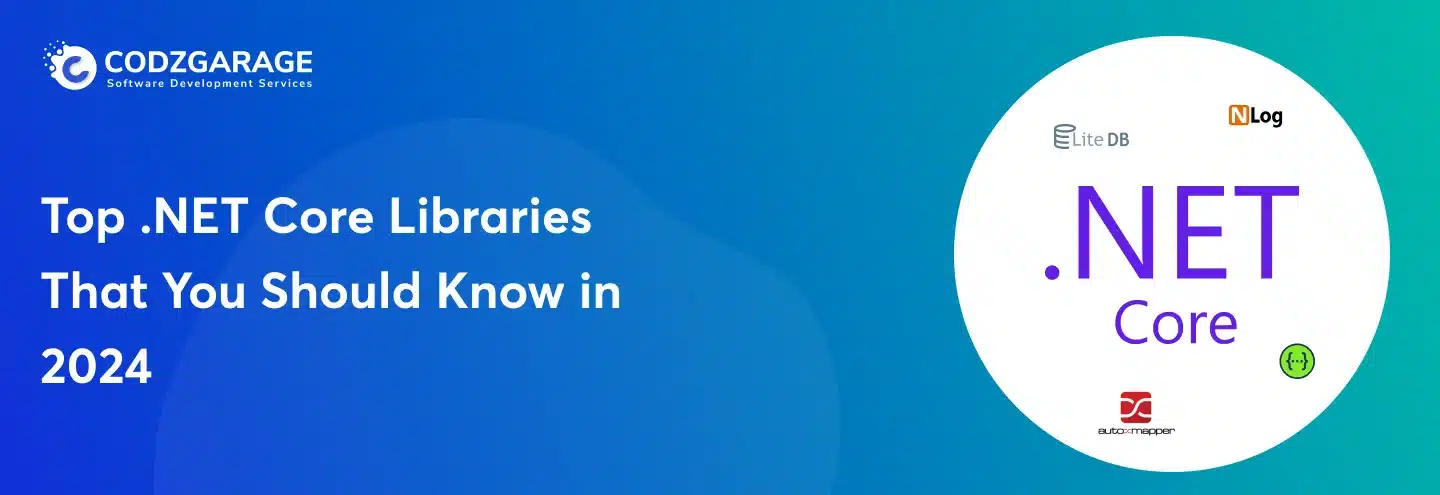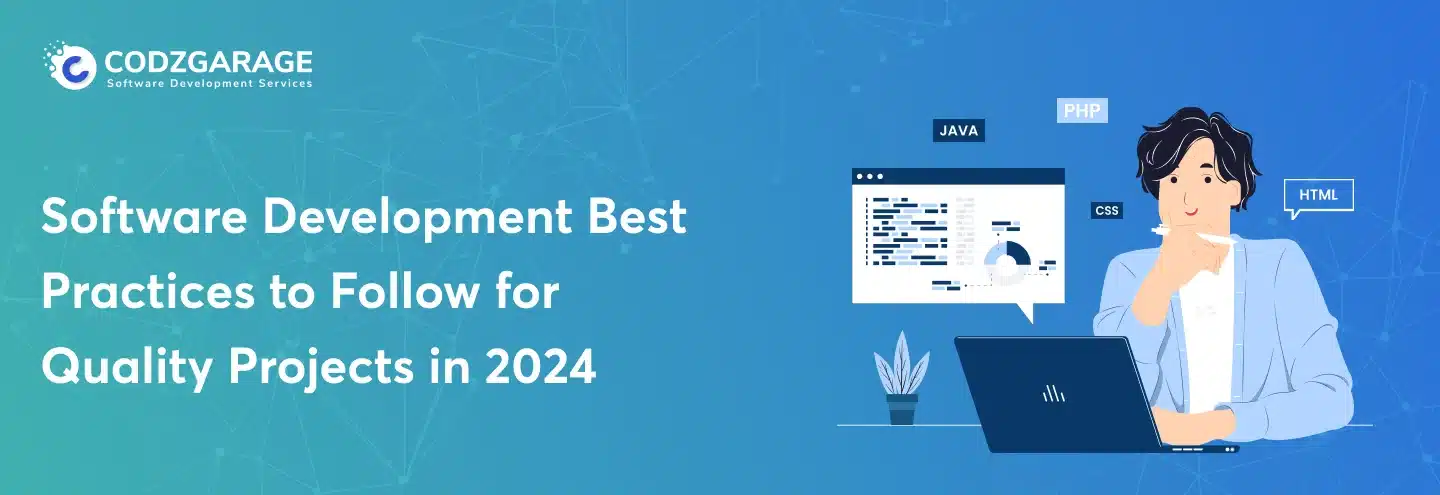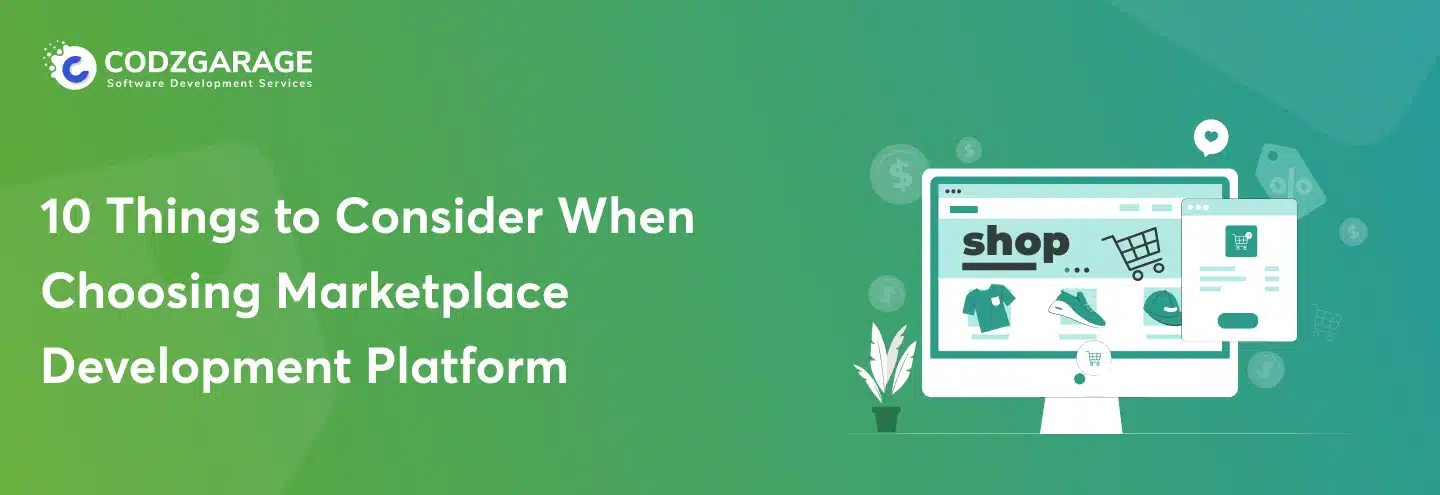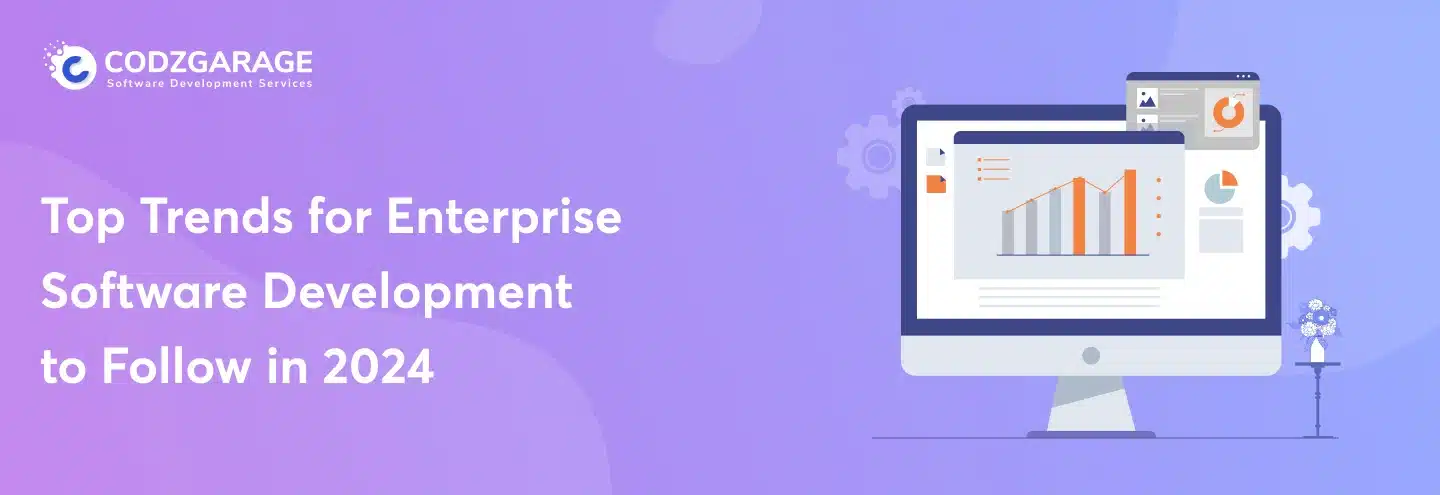7 Approaches to Modernize Legacy ERP System
Legacy ERP Modernization is crucial to stay relevant in the marketplace. Here are the 7 ways to modernize your legacy ERP application to bring it in alignment with the current requirements.
It’s needless to say that ERP development is essential to enhance your business success; however, modernizing legacy ERP systems from time to time, too, is critical to stay competitive in the marketplace. Let’s learn the steps to legacy ERP modernization and do it in a way that aligns the outdated system with the current marketplace’s needs.
Change is the nature of the universe, and ERP system software isn’t an exception. Yes, you’ve heard that right! As time goes by, the ERP systems working in your company require to be modernized. This is because technology changes frequently, and when a new technology enters the market, it outclasses the previous ones- as it’s more efficient than the previous ones. Consequently, if your system is based on a technology launched 4-5 years ago, it’s likely to become obsolete, and you may need to modernize the system. This article will be navigating you through 7 ways on how to modernize legacy ERP systems.
Codzgarage is a legacy software migration agency providing comprehensive software migration solutions to businesses worldwide. Contact us for a free quote!
Let’s dig deeper!
What’s a Legacy ERP System?
A legacy ERP software solution is an application driven by an obsolete technology that was once innovative, but as time passed by, it became outdated. Every system, at the very time of its launch, is innovative, but new technology comes into the market with time and outperforms the same. To bring it in alignment with the current marketplace, you need legacy software modernization. For that, you need to recognize the signs that your legacy system needs modernization and renovate it for an improved performance experience.
Legacy ERP Modernization Examples
As we mentioned above, every software once was innovative and high-performance, but as time goes by, new technologies come in and outclass the existing ones. However, there may be many; here are some of the best legacy system examples, which include the old versions of JD Edwards, Microsoft Dynamics, IFS, Baan, Kerridge, Oracle, Merlin, Lawson Accounts, Sage, Sapphire, and the like.
Consider a Proper Evaluation of Your Legacy ERP System Before Modernization
Before you head to legacy system modernization, consider creating an application modernization roadmap by evaluating the existing system. There are various drivers for legacy system modernization, some of which could be issues, concerns, and impediments. These are the issues of legacy applications caused by the technology, functionality, and architecture.
There are some more drivers for legacy applications modernization from a business perspective. They’re business values, business fit, and agility. There comes a time when a legacy system fails to meet current requirements; the system needs to get modernized to fit into the needs of an organization. Applications lacking the agility to keep pace with the digital business requirements tend to cost or risk liability, too.
To avoid these circumstances, you need to assess your legacy system following legacy software assessment best practices. Once you assess and know what your system requires, you’ll be more likely to modernize it as it should. Once modernized, you’ll see immense changes in your legacy system’s performance.
7 Legacy System Modernization Approaches
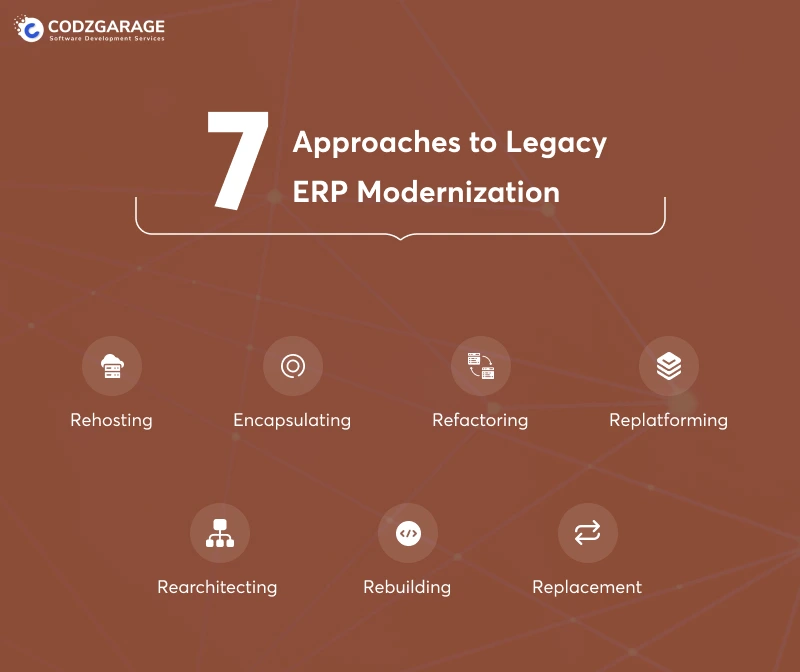
There are many challenges and solutions associated with legacy system modernization; however, having the right approach would make the process convenient. Here are the seven legacy ERP modernization approaches, following which you can modernize your existing system quickly and conveniently.
Rehosting
Rehosting is the first approach to legacy system modernization. When an organization realizes it has outgrown its existing ERP system, which starts to experience performance issues, the organization should consider moving its ERP solutions into an infrastructure other than the existing one. It can be either a new server or a cloud service provider. It helps gain more processing capability, faster storage, and enhanced networking.
Encapsulating
Another approach to legacy ERP system modernization is Encapsulating. With this approach, you can expand the features of your existing application by encapsulating its functions and data. It makes them available as services through an API.
Refactoring
Another approach to a legacy ERP application modernization is refactoring, which consists of evaluating and optimizing ERP procedures and customizations. The approach needs a committee of business analysts, subject matter experts, IT staff, and the like. The committee analyzes and evaluates the ERP system and suggests the changes required to enhance the efficiency and overall operation.
Replatforming
The next approach to legacy ERP system modernization is replatforming. Following the re-platforming approach, you can migrate to a new runtime platform with minimal changes to the code without changing the code structure, functions, and features.
Rearchitecting
You can follow the rearchitecting approach to legacy ERP modernization if you need to add some third-party applications to gain functionalities that your existing system lacks. It has the potential to resolve business issues. For instance, an organization might need to put an end to the duplicate data entry between the current ERP software and their supplier’s system.
One of the ways for this is to adopt an electronic data interchange capable of providing a way to automatically exchange various data like invoices, orders, and delivery confirmations to mitigate duplication.
Rebuilding
The rebuilding approach to legacy ERP modernization involves a committee to review and attempt to optimize existing processes. For this strategy, the committee rebuilds some current business processes, starting from scratch. The committee is likely to add some tools to the mix or alter the staff responsibilities.
The committee may define the present workflows for invoicing; it may either be on a whiteboard or virtually. After that, it evaluates every single step and looks for redundancies or areas intending to streamline and automate the same.
Replacement
Last but not least. Replacement is another strategy that refers to replacing some legacy ERP system components that are unable to meet the business requirements. Systems like manufacturing resources planning, production management systems, and warehouse management systems are some of the ERP components that businesses tend to find inadequate for their business needs.
An organization heading to adopt a replacement strategy may opt to choose a third-party WMS that is likely to tie into its existing or legacy ERP platform.
Final Thoughts:
Having various approaches is another thing, and choosing one is another. However, there are various legacy ERP system modernization approaches; you should choose one wisely. First, analyze what your existing system requires, and then choose one that fits your needs. We discussed the top 7 approaches to legacy ERP system modernization; you can assess them and choose one that suits your needs and is capable of eliminating the troubles you’re encountering. We at Codzgarage provide ERP software development services that include even modernizing your legacy systems to newer platforms. Let’s connect.
Need
Consultation?Developer’s expertise!
- 11+ experience
- 100+ projects
- Timely delivery




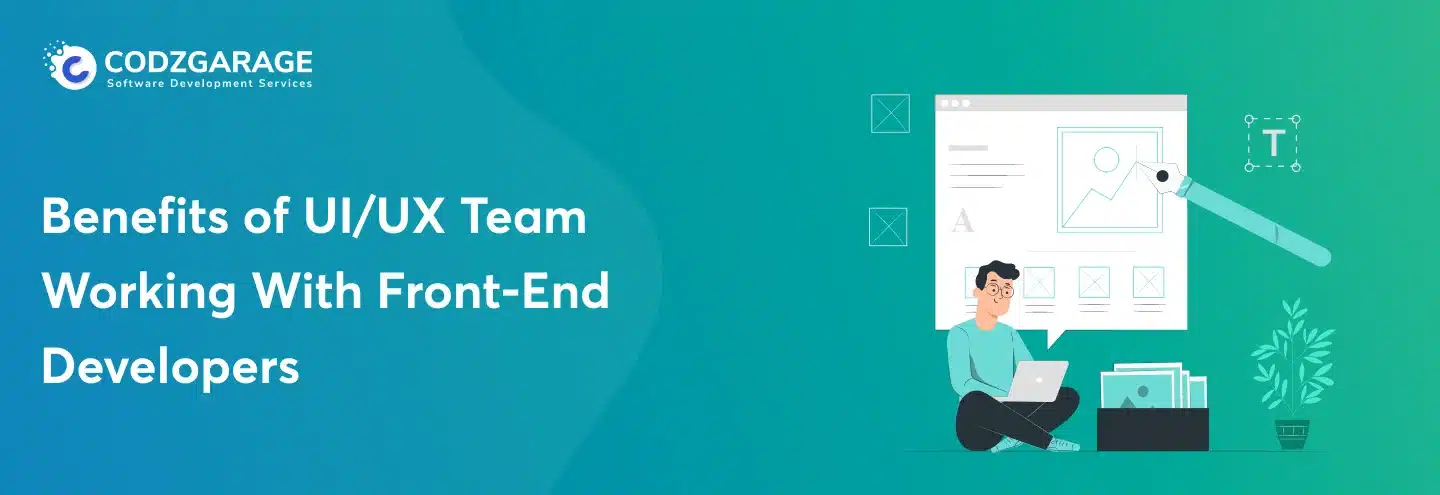
 Kalpesh Kapadia & Hiren Parmar
Kalpesh Kapadia & Hiren Parmar 